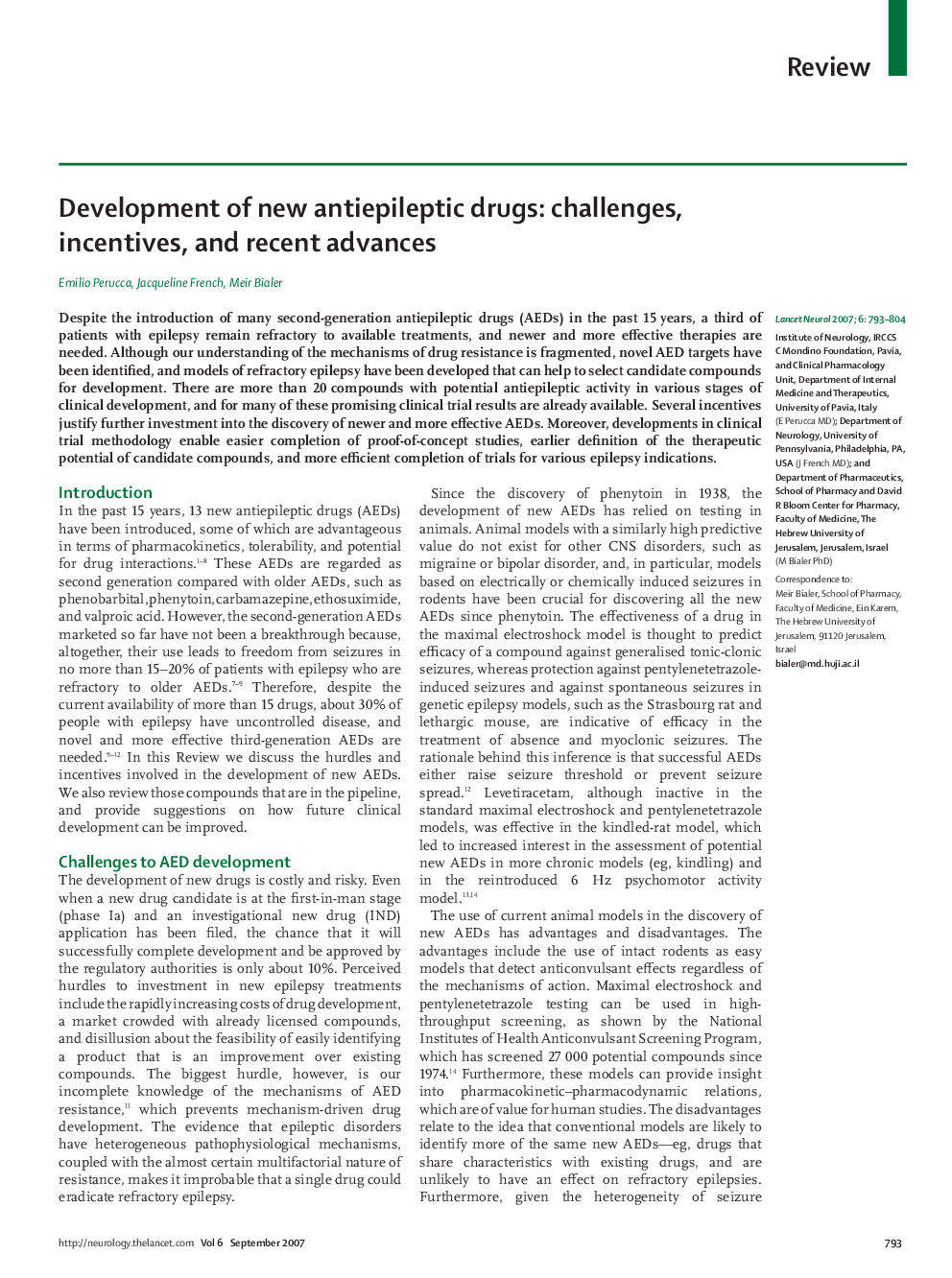| Article ID | Journal | Published Year | Pages | File Type |
|---|---|---|---|---|
| 3067656 | The Lancet Neurology | 2007 | 12 Pages |
SummaryDespite the introduction of many second-generation antiepileptic drugs (AEDs) in the past 15 years, a third of patients with epilepsy remain refractory to available treatments, and newer and more effective therapies are needed. Although our understanding of the mechanisms of drug resistance is fragmented, novel AED targets have been identified, and models of refractory epilepsy have been developed that can help to select candidate compounds for development. There are more than 20 compounds with potential antiepileptic activity in various stages of clinical development, and for many of these promising clinical trial results are already available. Several incentives justify further investment into the discovery of newer and more effective AEDs. Moreover, developments in clinical trial methodology enable easier completion of proof-of-concept studies, earlier definition of the therapeutic potential of candidate compounds, and more efficient completion of trials for various epilepsy indications.
